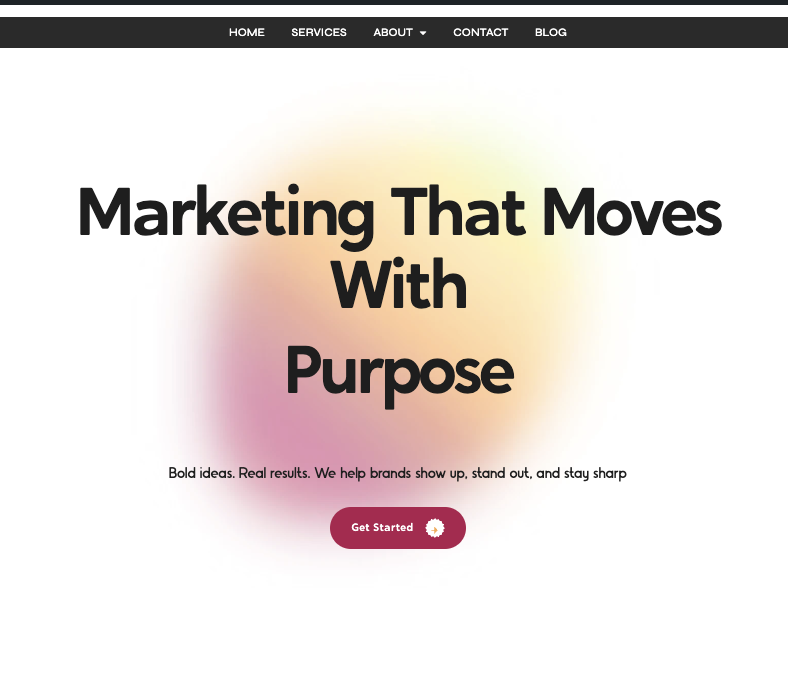A fresh website design boosts lead generation by creating an inviting, user-friendly experience that encourages visitors to engage and take action. In today’s digital landscape, first impressions matter, and your website often sets the tone for customer relationships. When your site is modern, optimized, and visually appealing, it acts as a magnet for leads, helping your business grow faster and smarter.
Why Your Website is Key to Lead Generation
Your website serves as your digital storefront, often shaping the first impression potential customers have of your brand. If visitors find it outdated or difficult to use, they’re likely to leave and explore competitors.
Essential Features of a High-Converting Website:
- Responsive Design: Ensure your site looks and works well on all devices.
- Clear Calls-to-Action (CTAs): Encourage visitors to take specific steps like subscribing or contacting your team.
- Fast Load Speeds: Keep visitors engaged by reducing wait times.
- Seamless Navigation: Make it easy for users to find what they need.
A website designed with these elements becomes a powerful tool for driving lead generation, ensuring visitors stay and engage rather than bounce.
User Experience: The Foundation of Lead Generation
User experience (UX) is the secret sauce behind high-performing websites. When visitors enjoy navigating your site, they’re more likely to explore further and engage.
How UX Drives Engagement:
- Simplified Layouts: Organize content to guide visitors toward your CTAs.
- Faster Load Times: A one-second delay can reduce conversions by up to 7%.
- Mobile Accessibility: With over half of all web traffic coming from mobile devices, a responsive site is essential.
- Accessibility Features: Tools like alt text for images and keyboard navigation expand usability.
By prioritizing UX in your redesign, you create an inviting digital environment that naturally converts visitors into leads.
Mobile Optimization: A Non-Negotiable for Lead Generation
More than 50% of internet users browse on mobile devices. If your website isn’t optimized for smaller screens, you risk alienating a huge audience.
Benefits of a Mobile-Friendly Website:
- Higher Engagement: Mobile users expect intuitive design and quick navigation.
- Improved Load Speed: Optimized mobile pages load faster, reducing bounce rates.
- Better SEO Rankings: Search engines reward mobile-friendly sites with higher visibility.
Example:
Consider a local business with a mobile-optimized website. They experience a 30% increase in contact form submissions after redesigning for mobile compatibility. This demonstrates the significant impact of mobile-first design on lead generation.
The Power of Visual Design in Building Trust
Visitors form opinions about your website almost instantly. A polished, modern design helps establish trust and credibility, while a cluttered, outdated look can drive users away.
Tips for Visual Design Success:
- Professional Images: High-resolution visuals convey quality and attention to detail.
- Consistent Branding: Use uniform colors, fonts, and imagery to reinforce your brand identity.
- Whitespace: Allow breathing room between elements to improve focus and readability.
- Interactive Features: Tools like sliders and animations add a dynamic element to the user experience.
By making thoughtful visual updates, your website becomes a compelling representation of your brand, fostering trust that leads to conversions.
The Art of Strategic Call-to-Actions (CTAs)
A website without CTAs is like a roadmap with no destination. Effective CTAs guide users toward meaningful actions, turning passive visitors into active leads.
How to Craft Perfect CTAs:
- Use Clear Language: Action words like “Subscribe,” “Download,” or “Get Started” motivate users.
- Strategic Placement: Position CTAs at key points like the header, middle of the page, or after engaging content.
- Test Multiple Variations: Experiment with wording, colors, and placement to find what resonates.
- Make Them Stand Out: Use bold designs or contrasting colors to grab attention.
Example:
A service-based business redesigned its website to include CTAs like “Request a Free Consultation” on every service page. This resulted in a 40% increase in inquiries.
SEO and Lead Generation: A Perfect Partnership
A fresh website design offers an excellent opportunity to enhance your SEO strategy. Better SEO means higher search engine rankings, which leads to increased traffic and more potential leads.
SEO Improvements During a Redesign:
- Optimized Images: Compress images to maintain quality while improving load times.
- Meta Descriptions: Include concise, keyword-rich descriptions for better click-through rates.
- Structured Content: Use headings and subheadings to make content scannable for users and search engines.
- Internal Links: Guide users to related pages to keep them on your site longer.
Real-Life Results:
Companies that invest in SEO as part of their redesign often see a 30% increase in organic traffic within six months.
Content Matters: How to Engage Visitors
Your website’s content plays a critical role in keeping visitors interested and turning them into leads. Without valuable, targeted content, even the best design will fall flat.
Content That Converts:
- Case Studies: Showcase real-world success stories to build credibility.
- Blog Posts: Provide educational and engaging content to establish authority.
- Landing Pages: Create focused pages tailored to specific campaigns or audiences.
- FAQs: Address common questions to make visitors feel understood.
Fresh, relevant content aligned with your audience’s needs ensures your site remains both informative and engaging.
Measuring the Impact of Your Website Redesign
Once your redesign goes live, monitoring performance is essential to assess success and identify areas for improvement.
Metrics to Track:
- Bounce Rate: Indicates how well your site retains visitors.
- Conversion Rate: Measures how many users take desired actions, like filling out a form.
- Session Duration: Longer visits suggest higher engagement.
- Traffic Sources: Pinpoint where your leads are coming from, such as search engines or social media.
Using tools like Google Analytics helps you refine your strategies for even better results over time.
Conclusion
A fresh website design boosts lead generation by delivering a seamless user experience, improving mobile compatibility, and optimizing for SEO. With modern visuals, strategic CTAs, and engaging content, your site can become a powerful driver of business growth.
Investing in a website redesign isn’t just about keeping up appearances—it’s about creating a better platform for your business to thrive. Take the first step today and unlock your website’s full potential as a lead-generation powerhouse.















